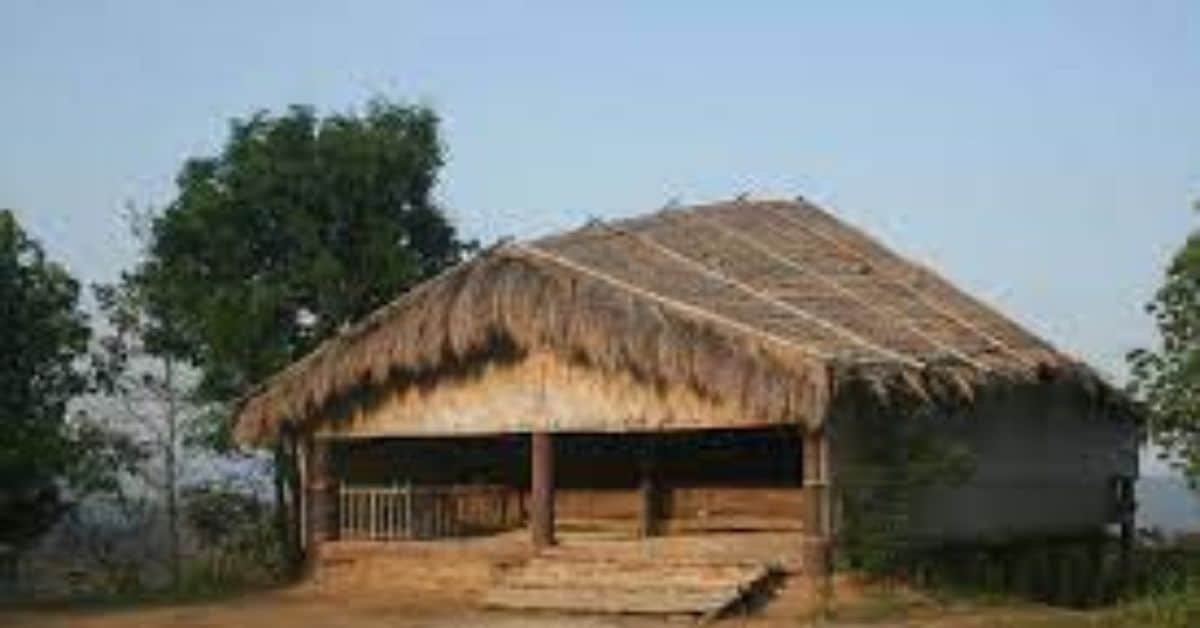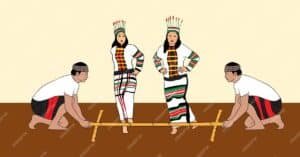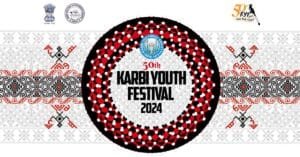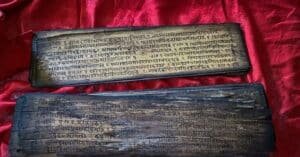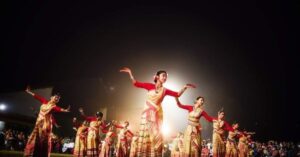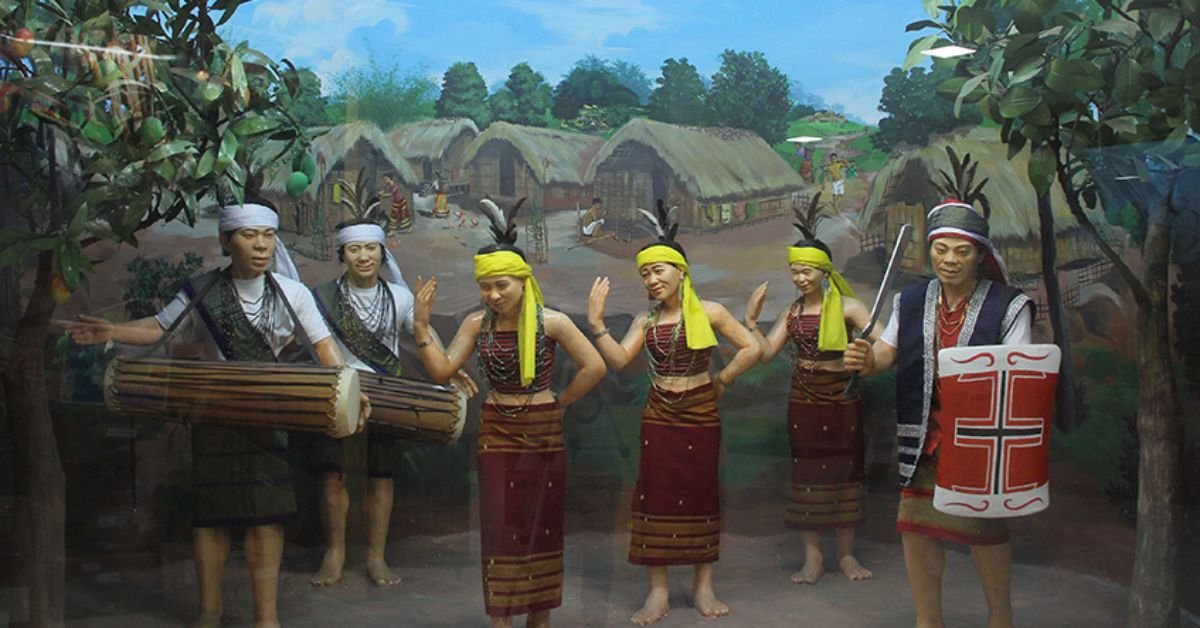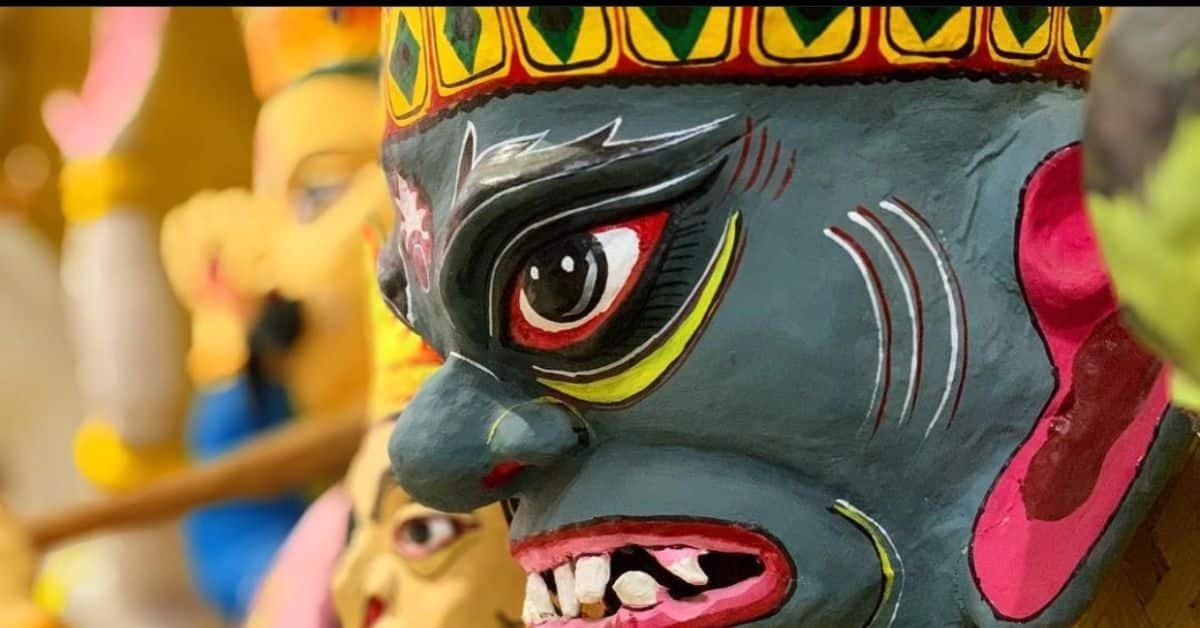The dormitory system like Zawlbuk in Mizoram is prevalent in the northeastern regions of India and is a shared practice among different tribal communities of North East India. For instance, This system is called Hengseuki by the Zemi Nagas, Zawlbuk by the Mizos, Budonzwl by the Hmars, Terang or Farla by the Karbis, Nodrang by the Dimasa Kacharis, Morung Ghar by the Deoris, Murong Okum by the Misings, Chamadi by the Tiwas (Lalungs), Rensi by the Rengma Nagas, etc. These dormitories bear resemblance to the ashram system in Hindu culture, where young boys and girls receive instruction in various aspects of life. In places like Zawlbuk, these dormitories serve as centers for teaching tribal welfare, wrestling, hunting, and village governance to the youth.
What is Zawlbuk?

Zawlbuk is a traditional Mizo bachelor’s dormitory, typically located in Mizo villages, serving as a multifunctional communal space for young unmarried men, travelers, and visitors. Constructed primarily from timber and bamboo, the Zawlbuk featured a thatched roof and could be accessed via a platform made of rough logs at the uphill end.
In ancient times, every Mizo village was equipped with a Zawlbuk. In larger villages that were subdivided into sections called Vengs, it was common to find more than one Zawlbuk. In fact, every Veng within a sizable village had its own Zawlbuk.
These dormitories were strategically located in an open area at the highest point of the village, typically positioned opposite the Chief’s residence. Nearby, one could often find the houses of the village elders, known as Upa.
Inside the dormitory hall, a central fireplace continually burned, while a raised bunk extended from one end to the other, offering a place for sleeping. The open area around the hearth served multiple functions, occasionally transforming into a wrestling arena or a dance floor.
Importantly, the Zawlbuk served not only as a sleeping space for unmarried young men but also as a lodging for travelers and visitors to the village.
History of Zawlbuk in Mizoram
The origins of the Mizo’s use of the Zawlbuk are ancient and not precisely known. Before westward migration of the Mizo tribe into India around 1700, young men used to sleep in or near the Chief’s house for immediate response when needed. This arrangement highlighted their value in protecting the village and maintaining order, leading to the establishment and significant role of Zawlbuk in Mizo life for over two centuries.
The earliest documented evidence of the Zawlbuk’s existence can be traced to the period when the Mizo population resided in a significant village named “Selesih,” which means seven thousand, located in the vicinity of present-day Khawbung (South) and Zawllsei between 1740 and 1750. This village, encompassing 7,000 houses and formed by the union of seven chiefs and their subjects, featured seven Zawlbuks. These Zawlbuks served as sleeping quarters and resting places for young men, eventually earning the name “Zawlbuk” (rest house), and were constructed collectively, particularly by the young men of the community.
Architecture of Zawlbuk
The Zawlbuk structure is constructed from wooden poles and mature bamboo, with the number of poles varying based on the Zawlbuk’s size. The central support, referred to as the “tlung,” holds the sloping roof, which is reinforced with timber and bamboo rafters in a crosswise pattern called “chhun.” Long leaves, known as “diso” in the Mizo language, extend from the thatched roof, giving the Zawlbuk a distinctive appearance. A bamboo wall is fixed at the entrance, leaving a space called “awkpaka” below the platform. Inside, a bamboo mat with a specific design called “chhuatpuitah” covers the floor, while strong interwoven bamboo walls with a design known as “bawhtah” are on the sides.
The central part of the Zawlbuk houses a square fireplace enclosed by timber logs rising from the ground to about six inches below the floor’s surface. To protect the roof from fire and smoke discoloration, a woven bamboo mat hangs over the fireplace. At the back of the Zawlbuk, there is a raised platform called “dawvan,” which is approximately six feet wide and one foot high, extending across the Zawlbuk’s breadth. This platform is used for various activities, such as gymnastics, wrestling, and seating, and also serves as a sleeping area at night.
Mizo youth to build the Zawlbuk. The timber and bamboos, and even the pieces of cane were painstakingly prepared to be used in the construction of the Zawlbuk. Everything they used in its construction was of the best quality. It was built to withstand rough weather; so that strong gales, windstorms, hurricanes and heavy rains could not destroy it.
Zawlbuk was a unifying force
Zawlbuk, bachelor’s dormitory played an important role in the life of Mizo people. Zawlbuks of large villages were big and those of little villages were small. In conformity and in keeping with their villages, they competed in having the most massive ‘bawhbel’ in their Zawlbuks. The bawhbel is a big, ponderous beam on the barrier at the entrance of a Zawlbuk. The whole male population of the village, including the children took part in carrying the bawhbel from the jungle to the village and placing it on the barrier at the entrance of the Zawlbuk. The noise, din and tumult they raised while carrying the big bawhbel was clamorous and deafening. That is why in the Mizo language Culture and Folklore of Mizoram a mob or a big crowd of people making a din is described by using the following metaphor, “Like carrying and transporting the bawhbel of a sizeable village.”
Daily Life at Zawlbuk
All the boys in the village who were over nine years old gathered firewood to be used in the Zawlbuk. Every evening each boy had to fetch and carry two or more bundles as stipulated by a prefect of the Zawlbuk and those boys were known as ‘Children who gather pieces of wood.’ It afforded great pleasure to the parents when their sons reached the age when they could fetch firewood for the Zawlbuk. No one was allowed to shirk; and if any of the boys shirked and were reported or found out, the Zawlbuk prefect would make them fetch two or three times the usual amount for one day. This punishment was known as ‘recurring or repeated fetching of faggots.’ And so, the work and responsibility of fetching and supplying firewood for the Zawlbuk was done and carried out by the youngsters. Some of the bigger boys from among the youngsters were appointed to clean the Zawlbuk and keep it neat and clean. Every evening they would sweep the floor, get rid of the soot and throw away the ash which had bed bugs from the crevices of the floor. When it was necessary, they also fetched drinking water for the young men who slept in the Zawlbuk. The water was carried and kept in long, large bamboo tubes which stood in a row against the bawhbel. Those boys were exempted from fetching faggots; and every month or a little longer than a month, the Zawlbuk prefects chose and appointed other boys to relieve them in rotation. If the Zawlbuk deteriorated and needed to be repaired or maintained, it was shameful for the young men. If it was not necessary to call the people in the village to help them, four or five young men would do the repairs themselves; but if the work of repairing the Zawlbuk was too heavy, the prefects would suggest the repairing and all the young men would work on it vigorously with verve and vim and renovate it.
Its Role in Mizo Culture
Zawlbuk controlled the life of the people of Mizoram. All the young men slept in the Zawlbuk. They would discuss the bad habits that some of the people had fallen into; and they would surreptitiously punish those who had transgressed against the laws of the community. They had the power and authority to do it, because like the small triple statues of the three little monkeys depicting, “See no evil, hear no evil, and say no evil,” the chief of the village would close his eyes, ears and mouth; because he knew that the culprits deserved the punishment. If any children went out of line, the young men of the Zawlbuk scolded, reprimanded and even punished them. If a certain child was incorrigible, with the agreement and sanction of the village leaders, the young men were allowed to use strong measures to change for the betterment.
The Zawlbuk was invaluable and convenient in controlling children and led them to better behaviour. It was also instrumental in building good character.
Its Role during an Emergency
The olden days, people used to raid each others villages. It was a life of constant and continuous warfare in which they used to ambush their enemies. Tigers often used to enter the village and carry off a domestic animal. Then, there were sick persons or dead bodies to be carried to the next village. Sometimes someone got lost in the jungle, and the young men had to go to look for the lost person. Sometimes there was a forest fire which threatened to engulf and destroy the village, and all the people to work together as fire-fighters. In all these emergencies, all the men and young men in the village had to be prepared when the alarm was sounded or when they heard the premonitory call. Because all the young men slept together in the Zawlbuk, it was convenient for them to work together simultaneously whenever the necessity arose.
Community Rules and Administration
Many matters which pertained and applied to, and embraced and included the whole community, but could not be put up to the court of the chief and his elders, were discussed, decided, resolved and carried out by men in the Zawlbuk. Things pertaining with traps; surrounding and encircling wild animals in a hunt; and even community fished with herbal toxins were discussed and decided in the Zawlbuk. Social and communal ideas and opinions which were ‘decided upon in the Zawlbuk and proclaimed,’ were regarded by the Chief and elders as very important, and were never particularly discarded or vetoed by them. That is why the Zawlbuk was important in ruling and administering society.
Zawlbuk Kept Mizo ‘Tlawmngaihna’ Alive
Mizos altruism ,which known as ‘Tlawmngaihna‘ , is way of life for the Mizo people. Utter meekness, humbleness, self-effacement and to live and have their being for others, is the core and essence of the truth of Mizo way of life. In olden days it made social and communal life pleasant. The Mizo enjoy working together and cooperating with each other. Inside Zawlbuk, they practiced the Mizos altruism which known as ‘Tlawmngaihna.’ It was the young men who slept in the Zawlbuk that kept Mizo altruism alive, and caused it to grow and bud and blossom into the beautiful customs and traits which add up to the Mizo identity and personality. That is why the Zawlbuk was useful in keeping Mizo Tlawmngaihna alive.
How It Became Obscure
After being useful for a long period of 200 years, the Zawlbuk which emanate a great spiritual atmosphere was gradually neglected, disregarded and came to an end. Time brought great changes in Mizoram. Arrival of Christianity and the establishing day schools by the Missionaries and the British government brought changes in the life ofthe Mizos. In 1925, there were no Zawlbuk functioning in the village; but N.E. Parry, who was the Superintendent of Mizoram from 1924 to 1928, was of the opinion that it would be good to continue using the Zawlbuks: and in the year 1926 he ordered the people to build Zawlbuks in every village. Many villages obeyed and they were busy as bees constructing Zawlbuks; but some villages were unable to complete them by dint of labour and effort. In the year 1938, the Superintendent, A.G. McCall (1935- 1945) convened a social meeting in Aizawl, Thakthing Veng (ward), to discuss the re-establishment of Zawlbuk. The people argued against it and said that it was inconsistent and incompatible with education and Christianity: so the Superintendent decided and resolved that the order to re¬ establish the Zawlbuk was rescinded, and the use of the Zawlbuks came to an end. During that period, though there were Zawlbuks standing in some of the villages, the young men did not occupy them and they had no authority, control and prestige over the community. The Zawlbuk has become a thing of the past. But still, the Zawlbuk has a place deep down in the hearts of the Mizo. It will remain in their memories and will never be forgotten. Its usefulness to the community, the people, the poor and the needy; and the ways in which it prolonged and kept alive the beautiful Mizo way of life such as ‘Tlawmngaihna’ will be remembered forever.

